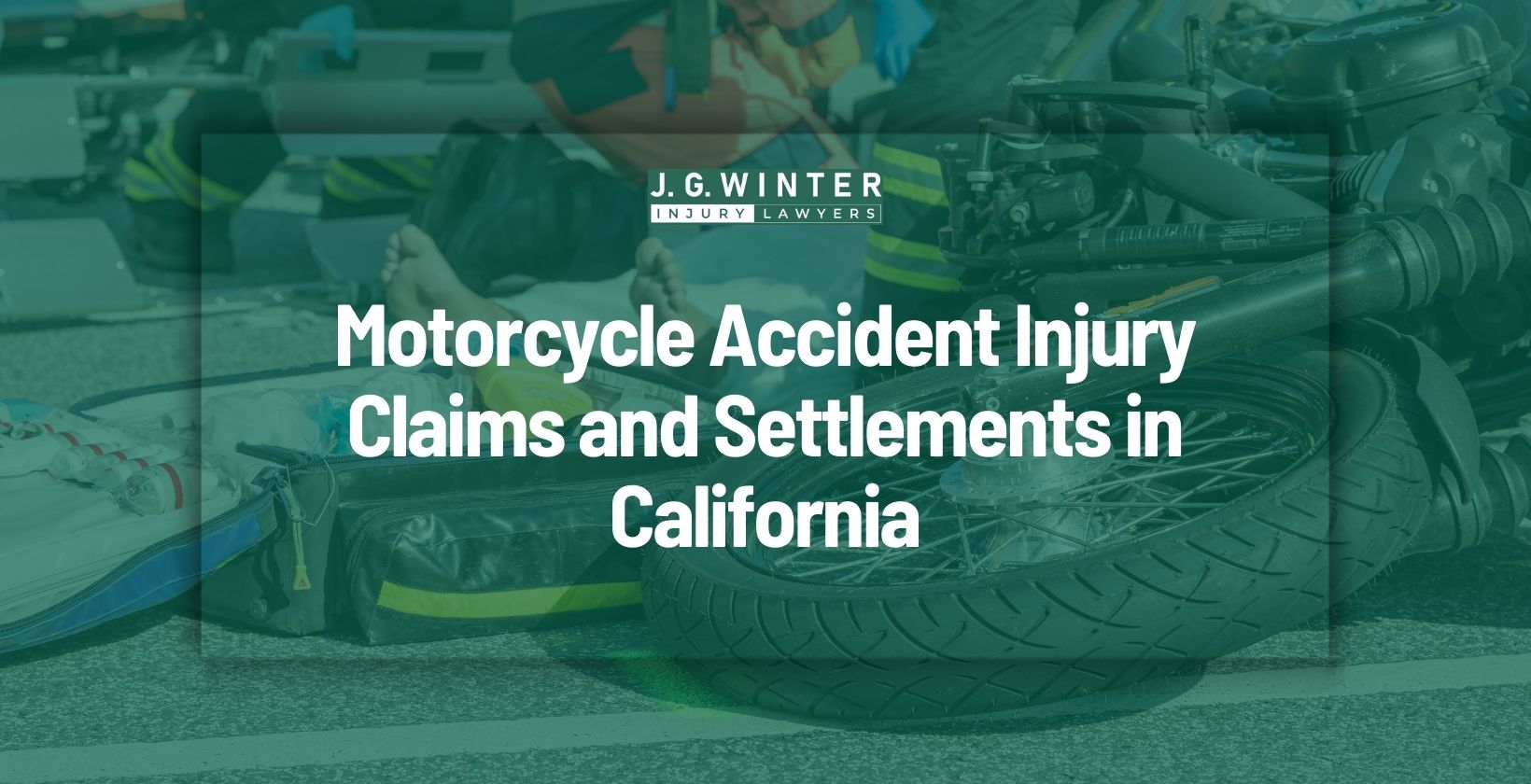Bicycle accidents involving children are more than just statistics; they are a matter of deep concern that highlights the need for increased awareness and prevention. Every year, bicycle accidents result in 247 deaths and 140,000 head injuries among children in the United States. These incidents often occur from factors such as inexperience, environmental hazards, and a general lack of awareness about safe cycling practices.
J.G. Winter Law understands the gravity of these accidents and the importance of educating both children and parents about cycling safety. Our commitment extends beyond legal representation to fostering a culture of prevention and responsibility, ensuring a safer environment for our young cyclists.
Understanding the Risks for Children on Bicycles
Bicycle riding, while a source of joy and exercise for children, also exposes them to certain risks on the road. The vulnerability of young cyclists primarily stems from their inexperience and limited awareness of traffic rules and road safety. Children, often absorbed in the moment, may not always be alert to their surroundings, increasing their risk of accidents. Environmental factors, such as busy streets, intersections without proper signals, and areas with high vehicular traffic, further escalate these risks.
Bicycle accidents involving children frequently involve collisions with vehicles, falls due to uneven or obstructed paths, or accidents while attempting maneuvers beyond their skill level. Understanding these risks is crucial in developing effective strategies to protect young cyclists.
Safety Measures to Prevent Bicycle Accidents
Ensuring the safety of young cyclists involves practical measures and ongoing education. Instilling safe riding practices and emphasizing the use of protective gear can significantly reduce the risk of accidents.
Helmet Usage
Wearing a helmet is one of the most effective ways to prevent head injuries in bicycle accidents. It’s crucial to ensure the helmet fits properly and meets safety standards. Educate children on the importance of wearing a helmet every time they ride, regardless of the distance.
Safe Riding Practices
Teaching children the rules of the road is essential. It includes using hand signals, understanding traffic signs, and learning the right way to navigate through traffic. Encouraging practices like riding in designated bicycle lanes, avoiding distractions, and being visible with bright clothing or reflectors also play a vital role in safety.
Adult Supervision
Adult supervision is key, especially for younger children. Accompanying them on rides and setting boundaries on where they can cycle safely can prevent accidents. Moreover, adults can model safe behavior, demonstrating how to ride responsibly and alertly.
What to Do If Your Child Is Involved in a Bicycle Accident?
When your child is involved in a bicycle accident, prompt and appropriate actions are crucial. It protects your child’s rights and ensures that any legal or insurance processes are handled effectively.
- Ensure Safety and Medical Attention: Make sure your child is safe and out of further harm’s way. Immediately seek medical attention, regardless of how minor the injuries may seem.
- Document the Accident: If possible, take photos of the accident scene, including the surroundings, any injuries, and damage to the bicycle.
- Gather Information: Collect contact and insurance information from any other parties involved, and take names and contact details of witnesses.
- Report the Accident: File a report with the local police. A police report can be an invaluable document in any subsequent legal action or insurance claim.
- Notify Your Insurance Company: Inform your insurance provider about the accident as soon as possible.
- Consult a Bicycle Accident Lawyer: Consider consulting a bicycle accident attorney experienced in handling bicycle accident claims. They guide on legal rights and the steps to take for a potential claim.
- Monitor Your Child’s Health: Keep an eye on your child’s physical and emotional health following the accident, as some symptoms or trauma may appear later.
The Psychological Impact of Bicycle Accidents on Children
Bicycle accidents can leave a lasting psychological impact on children, extending beyond physical injuries. The trauma of such an event can instill a deep-seated fear of cycling, sometimes leading to anxiety and reluctance to ride again. This emotional response is a natural reaction to a frightening experience. In some cases, children might exhibit signs of post-traumatic stress disorder (PTSD), including nightmares, mood swings, or changes in behavior.
Recognizing these emotional aftereffects is crucial. Providing support and, if necessary, professional counseling can help children process their experience and gradually regain confidence. Encouragement from parents is vital in helping young cyclists overcome their fears and return to enjoying the freedom and joy of cycling.
Promoting Safe Cycling Environments for Children
Creating a safe cycling environment for children involves concerted efforts from various sectors of the community. These strategies reduce the risk of accidents and encourage safe cycling practices.
Community Initiatives
Community programs can include organizing neighborhood watch groups to monitor children’s safety, setting up local cycling clubs, and advocating for child-friendly cycling paths. These initiatives foster a supportive environment for young cyclists.
Traffic Safety Measures
Implementing traffic calming measures in residential areas, such as speed bumps and better signage, can significantly enhance safety. Designating and marking bike lanes creates a safer space for children to ride.
Cycling Education Programs
Schools and community centers can offer cycling education programs that teach children about road safety, bicycle maintenance, and safe riding techniques. These programs empower children with the knowledge and skills needed for safe cycling.
Parental Guidance and Workshops
Workshops for parents on teaching children safe cycling and how to choose the right bicycle and safety gear are also crucial. Parental guidance and role modeling are key factors in promoting safe cycling habits.
Legal Aspects of Bicycle Accidents Involving Children
When a child is involved in a bicycle accident, several legal considerations come into play, often necessitating a bicycle accident attorney. The role of parents or guardians significantly impacts the outcome of a claim or lawsuit following a bicycle accident involving a child.
- Liability Issues: Determining liability can be complex in accidents involving children. It may involve the driver of a vehicle, the manufacturer of a bicycle, or even city authorities responsible for road maintenance.
- Insurance Claims: Filing an insurance claim requires a thorough understanding of the policy coverage and the claims process. It includes claims against your own insurance or that of the other party involved in the accident.
- Seeking Legal Assistance: Consulting with a bicycle accident lawyer becomes crucial, especially when injuries are significant, or liability is disputed. Legal expertise ensures the child’s rights and interests are adequately represented.
- Statute of Limitations: It’s important to be aware of the time limits for filing any legal claims or lawsuits related to the accident – California has a statue of limitation of 3 years.
- Parental Involvement: Parents or guardians must actively engage in the legal process, from documenting the accident to making decisions about legal action and insurance claims.
- Compensation for Damages: Understanding what types of damages (medical expenses, pain and suffering, etc.) can be claimed is essential to ensure the child receives fair compensation.
Conclusion
The importance of safety and proactive measures in the context of children and bicycle accidents cannot be overstated. Equipping our young cyclists with the right knowledge, safety gear, and awareness is the first line of defense against potential accidents.
Nordean Law supports families affected by bicycle accidents involving children. We ensure you receive the comprehensive legal guidance and representation you need. Our bicycle accident lawyers navigate the legal complexities and work tirelessly toward securing the rightful compensation and justice for you.
FAQs
What are Bicycle-Related Injuries in Children?
Bicycle-related injuries in children commonly include cuts, bruises, and abrasions, often occurring on the arms and legs. More serious injuries can involve head traumas, such as concussions, particularly if a helmet isn’t worn. Broken bones, sprains, and internal injuries are also possible, especially in accidents involving vehicles or falls from high speeds.
Is it Safe to Cycle with a Child?
Cycling with a child can be safe if proper safety measures are followed. It includes using appropriate child seats or trailers for younger children, ensuring the child wears a helmet, and choosing safe, less trafficked routes. It’s also important for the adult cyclist to be experienced and aware of how to safely navigate traffic and road conditions while cycling with a child.
What to Do If a Child Falls Off a Bike?
If a child falls off a bike, first ensure their safety away from further harm. Check for injuries and seek medical attention if necessary, even for seemingly minor injuries. Comfort the child and calmly assess the situation. If there are serious injuries, call emergency services immediately. After addressing health concerns, inspect the bicycle for any damages or issues that might have caused the fall.
How Can Parents Teach Bicycle Safety to Children?
Parents can teach bicycle safety to children by starting with the basics of wearing a helmet and protective gear. It’s essential to educate them about road rules, using hand signals, the importance of being visible to drivers, and riding on the right side of the road. Role-playing different traffic scenarios can be an effective way to teach these concepts. Supervised rides can also help children practice and build confidence.
At What Age Can Children Start Riding Bicycles on Roads?
The appropriate age for children to start riding bicycles on roads varies depending on individual maturity and cycling proficiency. Generally, children around the age of 10 to 12 may start to develop the necessary judgment and motor skills to handle busier roads. However, they must have a strong understanding of road safety rules and experience in less trafficked areas first. Even as they start riding on roads, it’s recommended that they do so under adult supervision initially.


